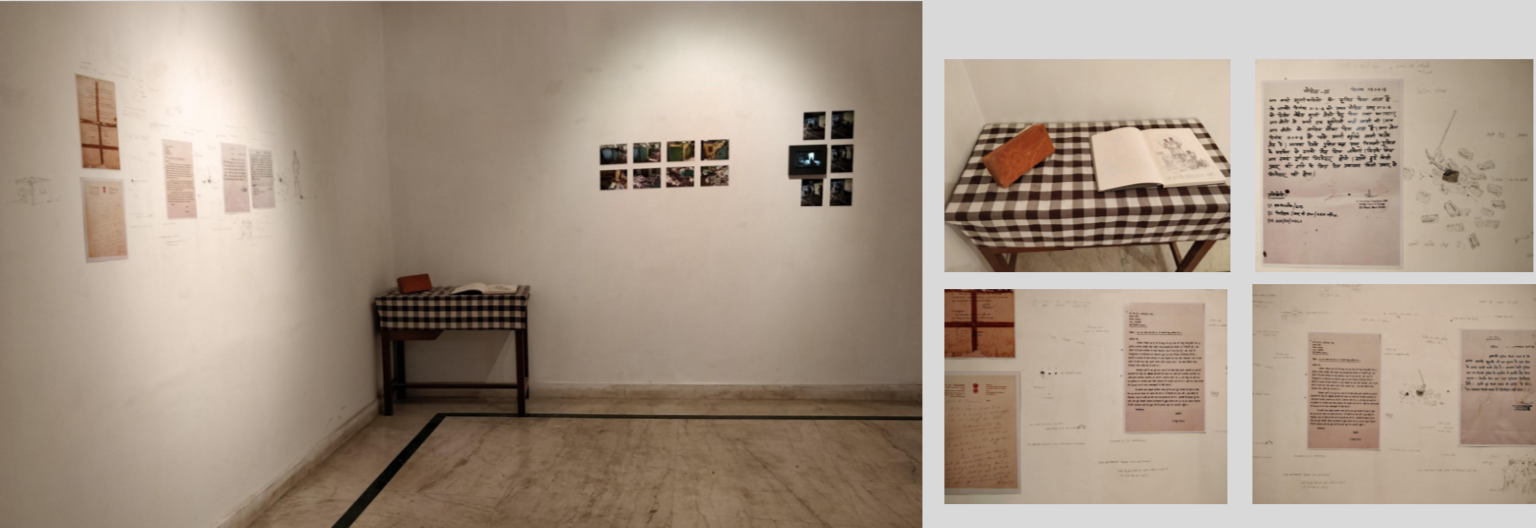‘In Search of Home: 1939 – 2021(Present) Part II – Loss of Memory in Present Time’ | New Delhi, India
New Dehli-based artist Vikrant Kano presents a long-term, multi-faceted project that he has been working on since 2018. His intention is to seek an understanding of the idea of home through his family history and personal archive across three generations, dating back to the Partition of India. Given the scope and expanse of Vikrant’s body of work, EAS is publishing excerpts in two parts. Part I: (published last week) introduces the project and delves into gathering memories. Part II, presented here, is about the loss of memory in present times, concluding with the a provocative question: Is it necessary to crush or destroy things in order to move towards the future?
THE DEMOLITION PROCESS
This work is an inquiry into understanding the right to one's own space, and its broader relationship with myself as a citizen of a state. The relationship between the history of the self vis-a-vis the space one occupies with the state and national politics is delved into through this investigative work.

Mapping
I documented a part of my house that was demolished by the Railway Government. Photo-journalistic in approach, this investigation into excavated materials has been disclosed through metaphorical as well as literal forms. Here, the explored material has been analytically mapped in which archival letters, official documents, papers,certificates, drawings, photographs, video, and objects have been used.
Storytellers Workshop - Zine Making Module
A zine made as part of a storytellers workshop became an effective tool in taking my stories, inquiry, material found from family archives, drawings, photographs, etc. to the masses. The idea was to communicate how I am looking at partition, migration and displacement in the present socio-political scenario--thus questioning the sacrosanct nature of information passed on to us as knowledge, new history, etc.

Click the top right arrow to open pdf in a new tab
Zine (Detailed images) | ZINE | 5’’ x 7’’ | 2018
Drawings
These graph paper drawings are an extension of my inquiry into the notion of ‘loss of memory in present time’. The drawings explore the planned structure and space created by human imprints in their day-to-day existence in the urban scenario. Geometric in nature, they hardly reveal any trace of human life and error.
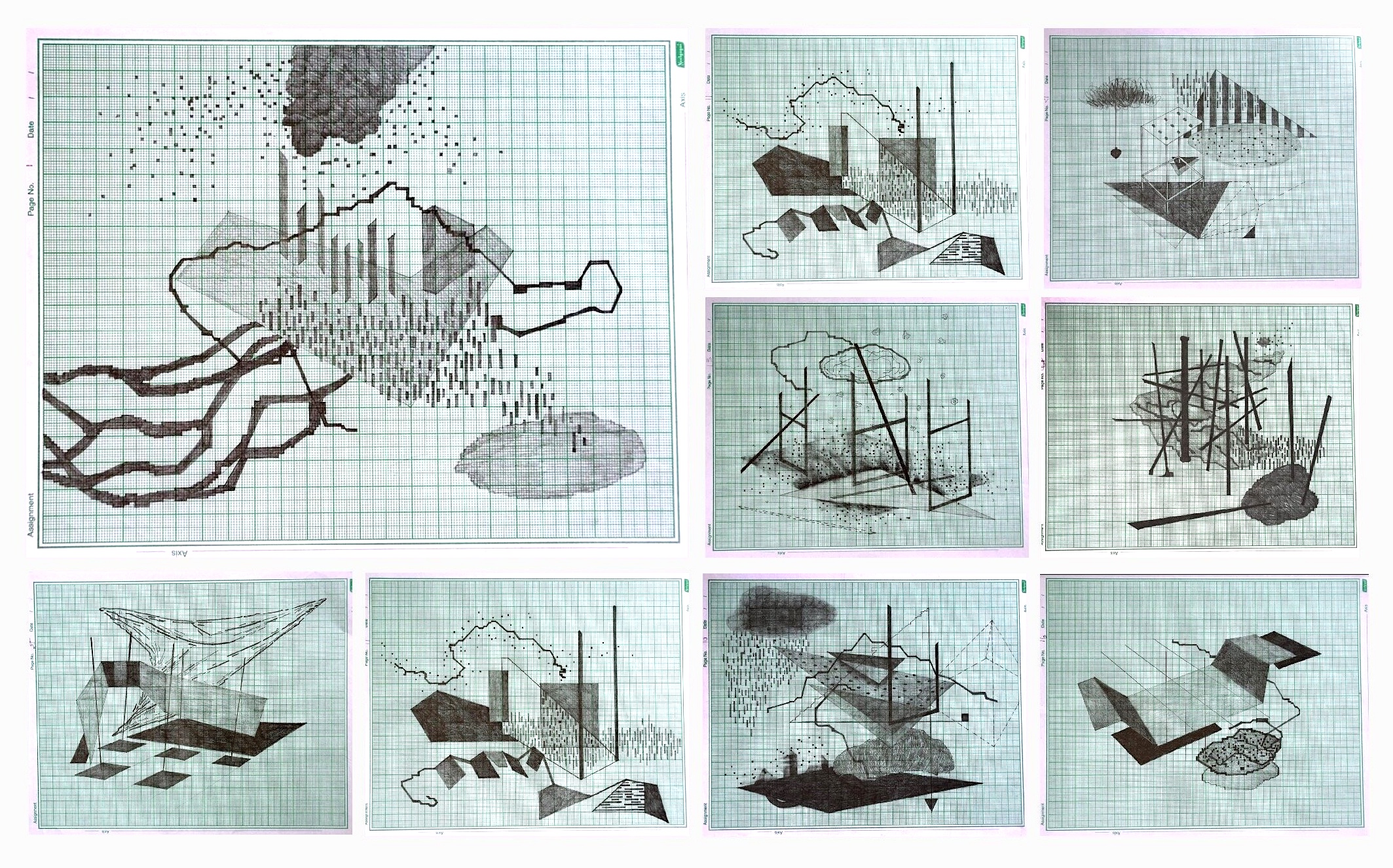
Dream - Brick and Clay Mix
This photographic performance unearths the home as a space of seeing, contemplating and facing the demolition of its physical reality when exposed to the workings of the state-machinery. The space that I inhabit in this performance is on the grounds of the rubble of a home that was built by my grandparents in the post-partition period. Built from sand and bricks without the binding element of cement, the home stood on government-owned land. As a result, the relevance of a ‘home-memory’, a ‘memory-home’, the narratives collected, and the challenges faced by my family post-Partition were not relegated to the background but were even more threatened through the possibility of complete erasure. All that remained then was my vision—blotted by the interiors of an imagined home—unbroken, small yet existing in its form and fervor to create a yearning for a personal future.

PREFABRICATED HOUSE PROJECT | OTTO KöNIGSBERGER WORK
(This project is currently in progress)
This work was developed during a "Next Step Residency" 2019 at 1Shanthiroad supported by the Sher-Gill Sundaram Art Foundation. I am responding here to architect Otto Königsberger’s idea of prefabricated homes for refugees.The architect was appointed in October 1948 by Jawaharlal Nehru to tackle the severe housing shortage due to an increase in the number of refugees following the Partition; however, the project did not get implemented. Prior to this, the architect had built a number of tropical structures in Bangalore and Mysore. I encountered one such structure—the Krishna Rao Pavilion at the Krishna Rao Park in Bangalore—from where I began researching this topic as a case study. Through this study, I attempt to reimagine the idea of the prefabricated home using modern materials.
Click the top right arrow to open pdf in a new tab
Mapping
This work traverses through Otto H. Königsberger’s architectural attempts (specifically in Bangalore), and how they have transformed through the years until the present moment. Through drawings, texts, images and a light-box, a mapping of his inputs and attempts in India have been made to reveal his efforts in introducing the idea of prefabricated homes, and the failures of which create another dent in the history of refugees in India. The entry into this history takes place through my family history of the Partition, the migration and displacement which took place, and what is invoked when the need for a home is not met.

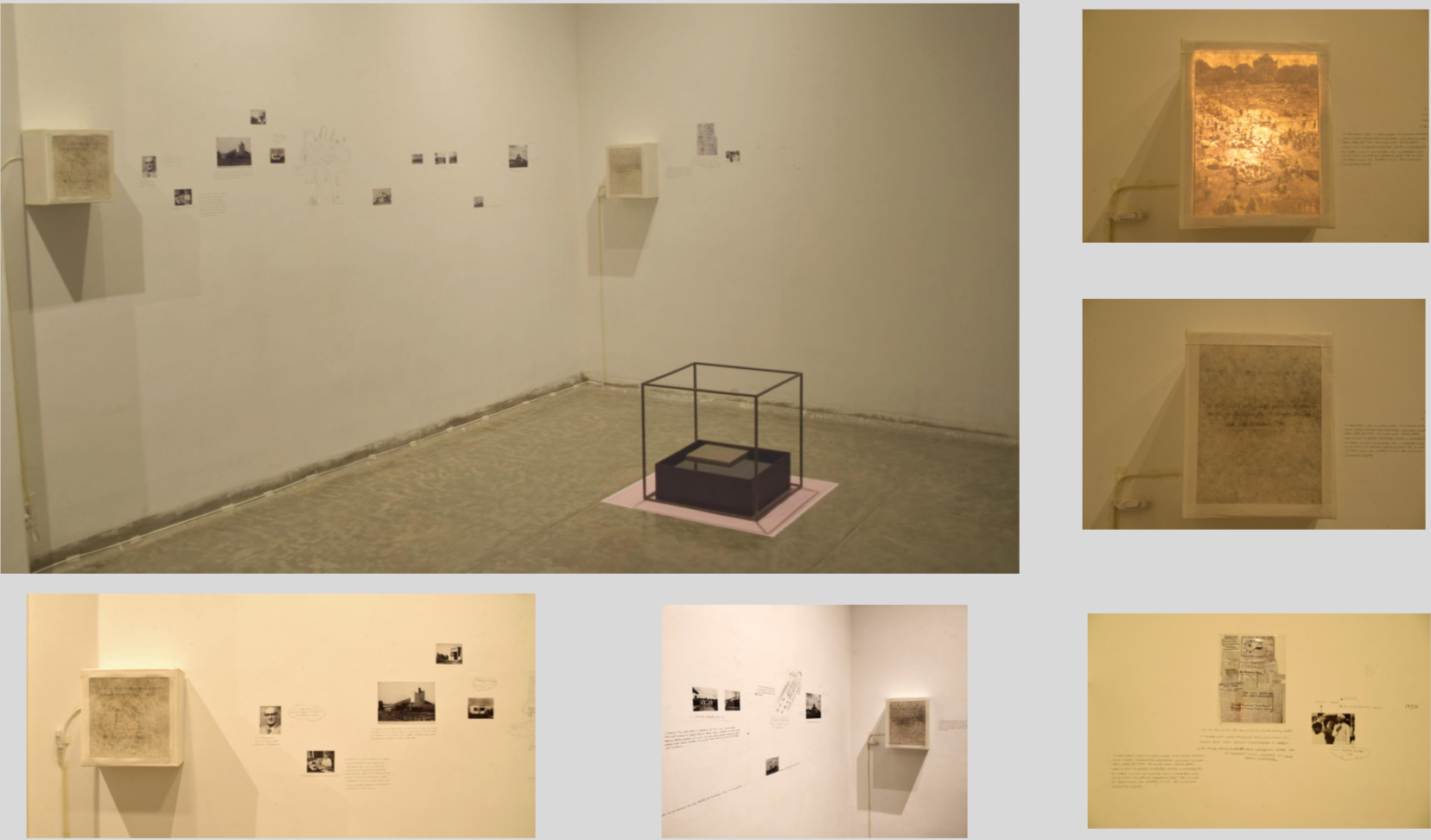
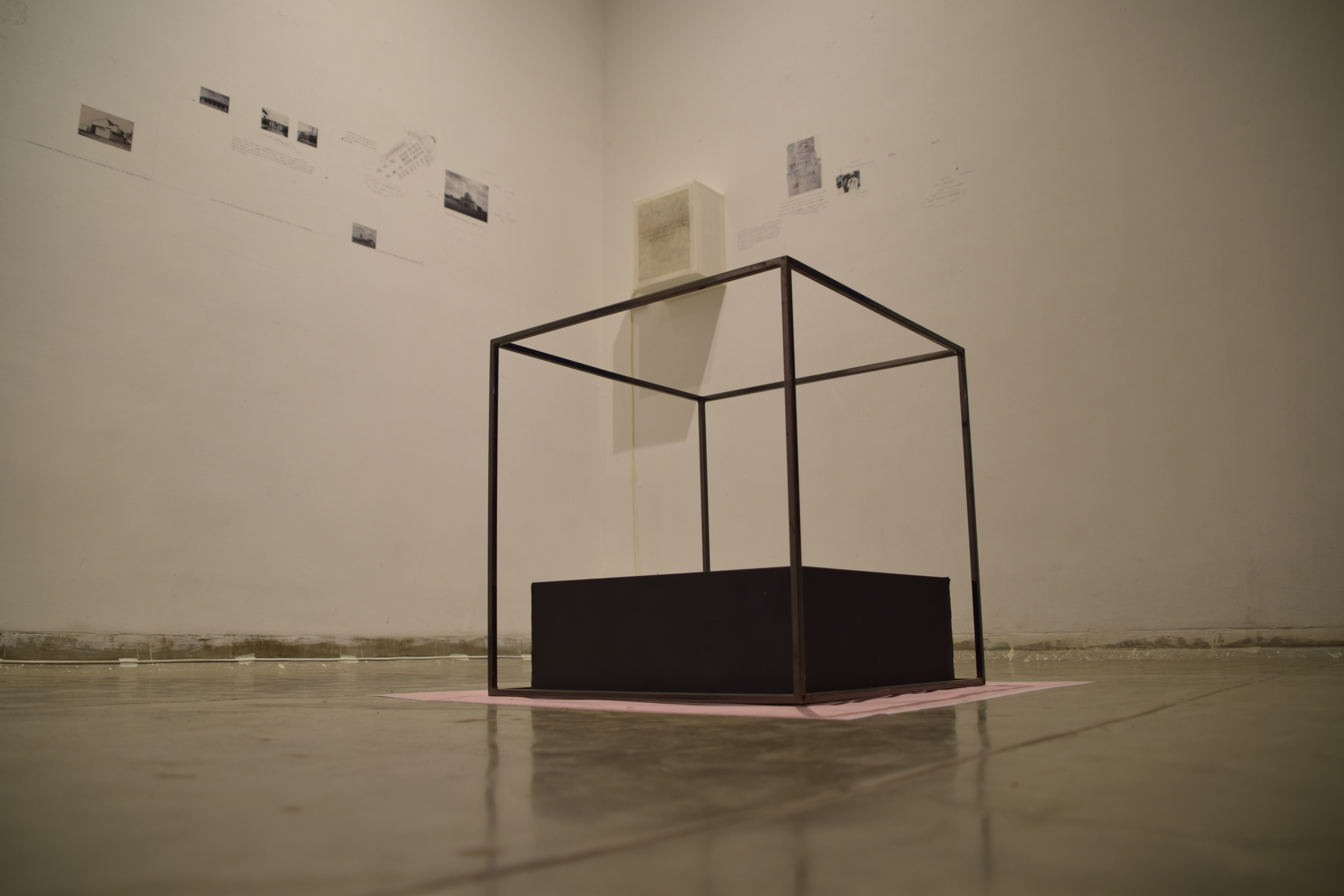
A Floating Land
The mapping of Otto H. Königsberger’s works in India introduced me to the relationship between cement and modernity in India. An upgraded version of cement ACC Block became the provocation for inviting poetic interpretations through architectural methods.This sculpture, which incorporates a lightweight cement block floating on water, is placed inside an iron rod cubic structure sitting on a graph paper, probing questions (once it is put up) with the works that surround it.

This body of work is a larger project based on the architect’s idea of prefabricated homes for refugees. The architect was appointed in October 1948 by Jawaharlal Nehru to tackle the severe housing shortage due to the increase in refugees following the partition; however, the project did not get implemented.
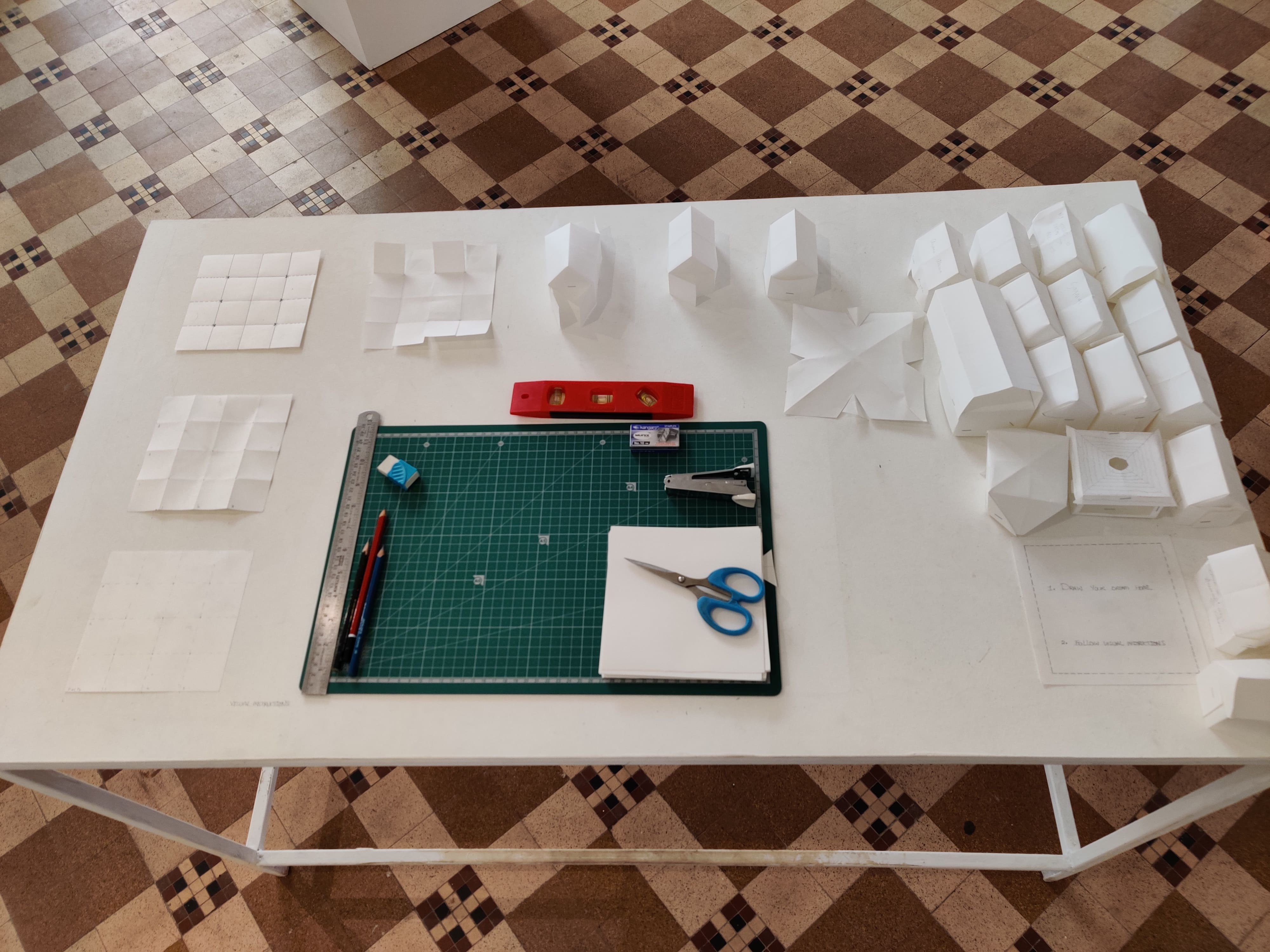
Dream Home
This interactive process with origami asks the viewers to engage in a ‘Dream Home’ project by inviting them to draw their own rendition of a home into a 3D model based on every migrant’s concern of ‘How will one imagine one’s home if one has to migrate into the Future?’ By stitching the idea of ‘home’ to every individual’s dream home, this activity creates the feeling of a mohalla [the Hindu word for community].
UN(TOLD) - ONGOING PROJECTS
This body of work uses family archive photo albums and oral narrative accounts as witnesses and simultaneously presents parallel local histories. This parallel is associated with Bungalow No. 4, State Entry Road - the narratives of the prevailing servant culture, VIP culture and prime location land. These colonial and post-colonial oral narratives have been forming and simultaneously changing, after which this bungalow will eventually cease to exist.
Is it necessary to crush or destroy things in order to move towards the future?
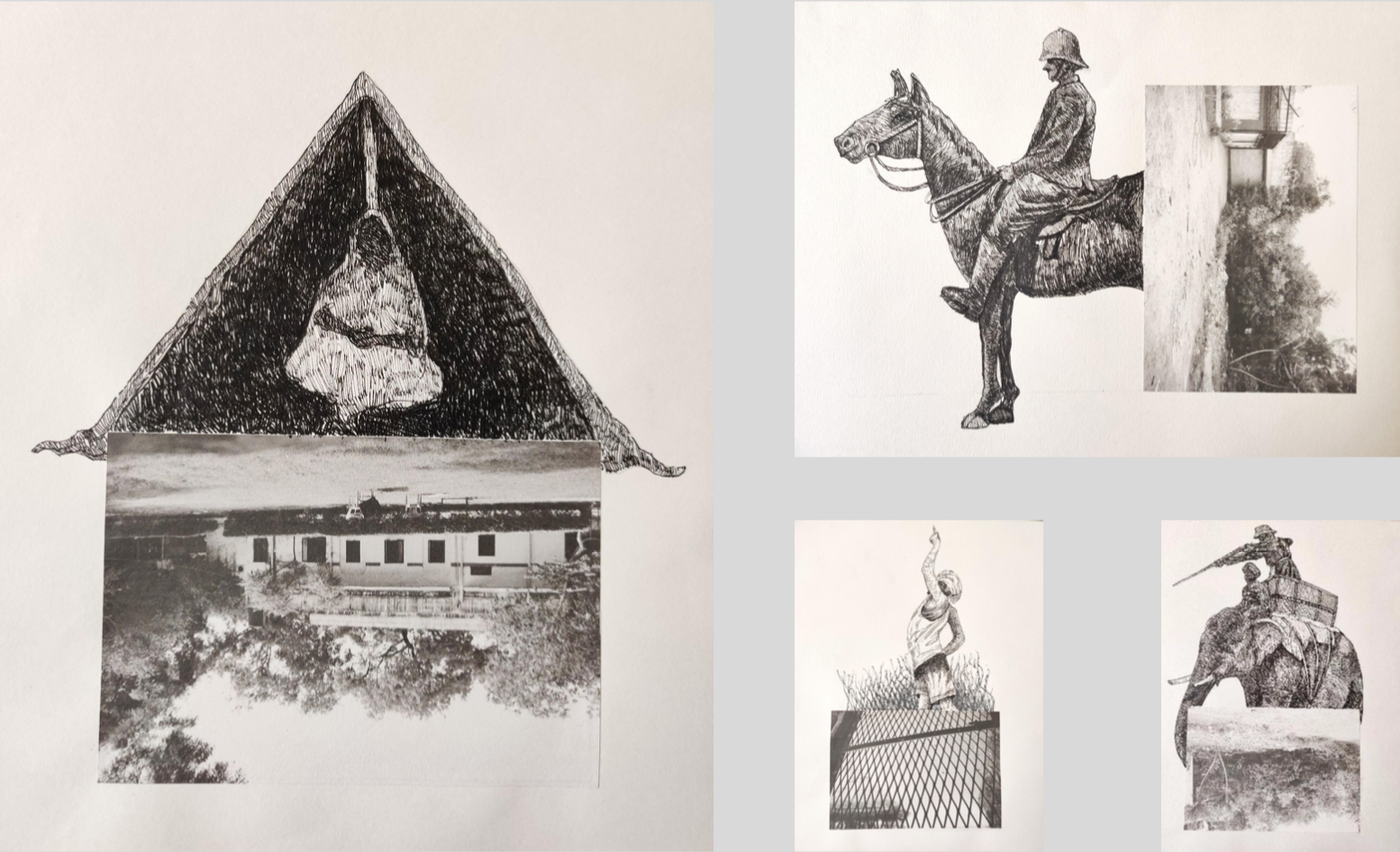

ABOUT THE ARTIST
Vikrant Kano is an artist who is from Delhi. He completed his BFA (2016) and MFA (2018) from College of Art, New Delhi. Vikrant’s art practice centers around the ‘‘idea of home’’ through the investigation of his family history & archives. His exploration in mediums is varied, ranging from drawing, painting to photography, videography, etc. Vikrant’s practice explores erasure, migration, separation, human relationship with architecture and memory. He has participated in various exhibitions around the world that include: Call to Disorder: Experiments in Practice and Research, curated by vidya Shivadas at the Serendipity Arts Festival, Goa; Castelnuovo Fotografia /seventh edition held in the castle of Rocca Colonna in Porto, Rome; and Brief Parables of Dystopia at MOMus:Museum of Contemporary Art, Macedonian Museum of Contemporary Art and the State Museum of Contemporary Art Collections held in Thessaloniki, Greece 2019.
